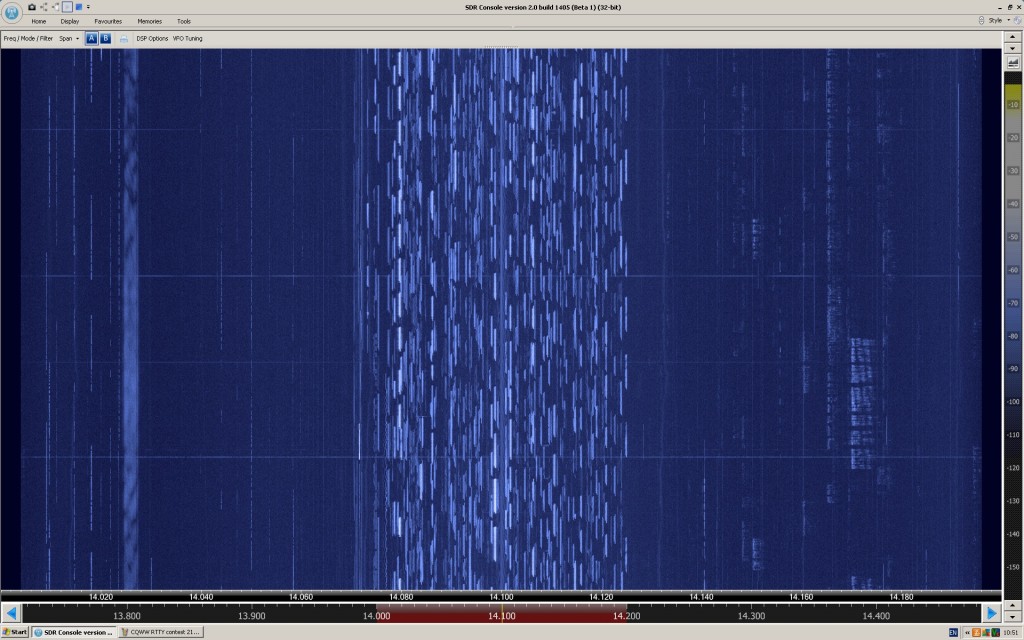Stumbled on wall-to-wall RTTY on the bands this weekend and discovered the 2013 CQ WW RTTY Contest. I’d read about the tail-end of contests being good times for QRP operators to pick up easy contacts so I quickly read up on contesting QSO format, watched for a while and set up some macros to do a bit of “search and pounce”…
By the nature of the contest the contacts were all extremely brief (and all the “599” signal reports totally meaningless) but over the few hours I found to play over the weekend I managed over QSOs with many transatlantic contacts, mostly east coast but a few further in including Alaska (more trans-arctic than transatlantic) and a very exciting contact with the far end of Texas… if that gets confirmed and the location is correct, at 5180 miles it qualifies for a 1000 miles-per-Watt award!

Interesting points:
- In just a few days after the contest the rate of return of Logbook Of The World confirmations is much higher for these
TTY contest contacts than for all my previous casual PSK31 contacts. I guess serious contest participants are much more concerned with electronic logging and log submissions. Useful to know if I’m going to build up the DXCC count on LoTW. - It was extremely useful to have a spectrum scope of each HF band from my SoftRock SDR setup as I was tuning up and down the bands with my Elecraft K2. This gave a good awareness of the spread of the RTTY traffic across the bands and which bands had traffic on. When a band seemed very quiet it was easy to see individual RTTY bursts on 10m appearing on the 192kHz-wide SDR waterfall and then quickly tune to them with the K2 I would have definitely missed these contacts if I didn’t have the SDR spectrum scope capability.
- There were, obviously, a few co-site interference problems with having the wideband SDR receiver on while transmitting from the other radio and both antennas in the loft so I am now planning on building a remote HF SDR that I can locate somewhere in the local area, perhaps at a non-ham friend’s house. Ideally somewhere close so the receiver is vaguely representative of my location and within surface-wave distance so I can monitor my own transmissions. Current plan is to have a look at an HF upconverter for the ultra cheap USB-RTL dongle receiver and a Raspberry Pi running the show…

